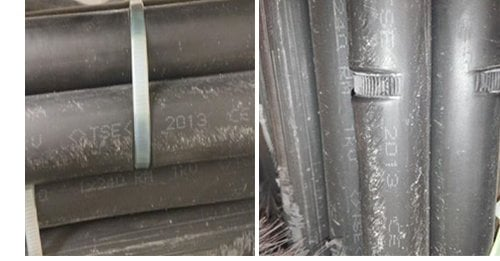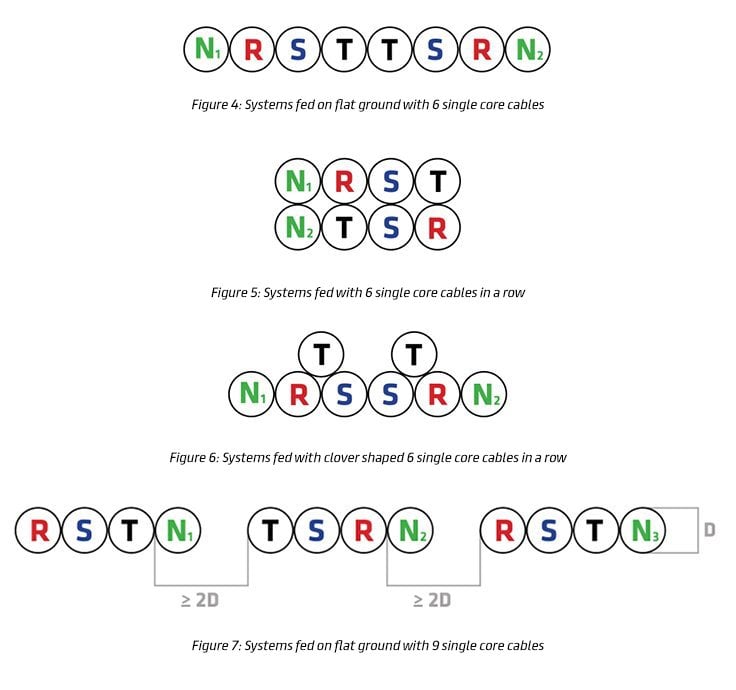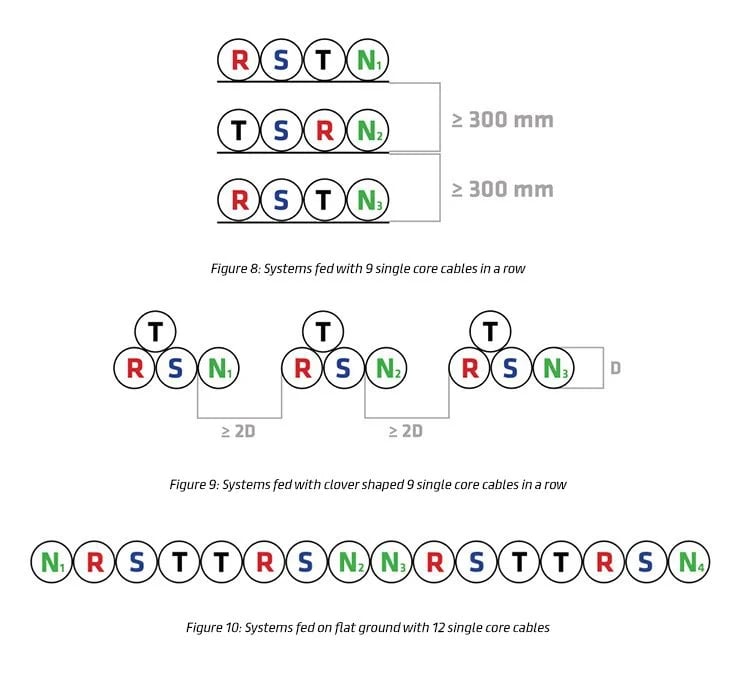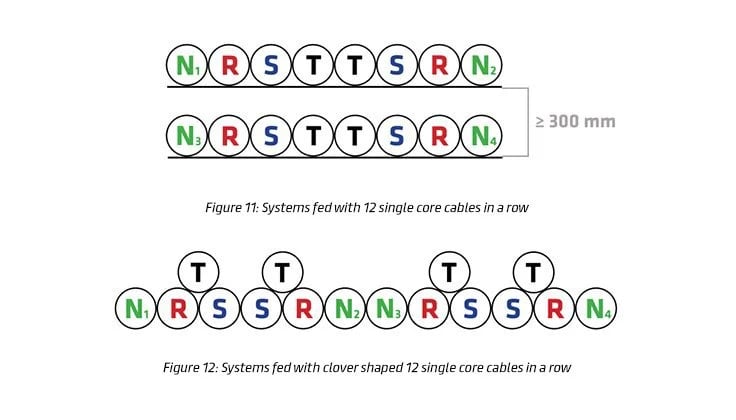INTRODUCTION
The power demanded in electricity systems also determines the cable cross-section and properties as well as the current to be transferred. In case of high power use, to meet the demand of currentAnd in order for the current to be carried at the demanded high powers to be met, the method of parallel connection of the cables can be selected. And when this method is selected, multiple cables need to be used for each phase.
The Importance of Phase Sequence and Application Examples
In the event that the right method of application is not selected in projects where multiple cables should be used in the same phase; the impedances between the cables can cause imbalanced current passages through the cables, and the imbalanced currents through the cables (imbalanced current distribution) can cause the cables to go up to different heats and overheating.








